I worked primarily from home for over a decade, and though I now have an office with a few employees, many of the challenges remain the same. Key among these is power, or lack thereof, and the havoc it can wreak. I recently set about upgrading from my old consumer UPS approach to a real always-on power solution for the home, and thought my blog readers would like to follow along!
I’ll begin with an overview of what’s available for home and small office power backup. This is by no means exhaustive, but it reflects the realistic options I found when researching. I welcome your suggestions in the comments!
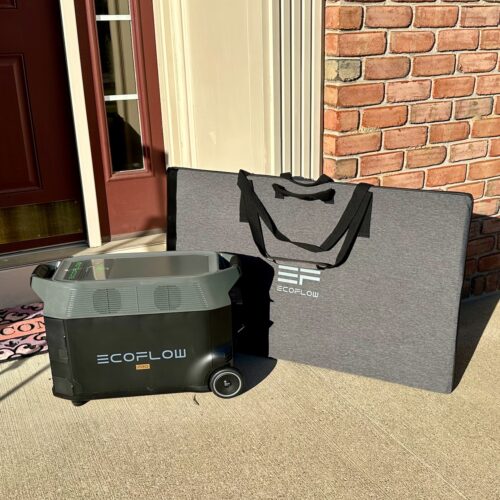
Office UPS Units
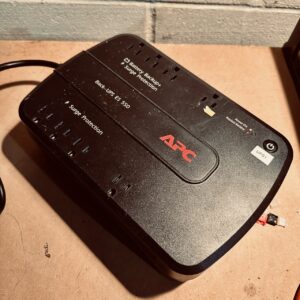
By far the easiest approach to dealing with power outages is to use a consumer un-interruptable power system (UPS). These are widely available and start around $100, making them easy to deploy.
The biggest issue with consumer UPSes is that they lack any real long-term power capability. Despite the big numbers on the box the run time for a UPS is measured in minutes rather than hours, making them an incomplete solution if the power is out for long. Even larger or more expensive ones only last a few hours, and running them down to zero will destroy the expensive batteries inside. This is the other big issue. Expect to spend about the purchase price every few years to replace the sealed lead-acid batteries. Most UPS controls can’t actually detect a bad battery so you’re often surprised when your UPS instantly dies without warning. UPS units also can’t power high-wattage devices like the sump pump that keeps my basement dry. And their AC inverters are cheap, noisy square wave “choppers” so some equipment might not like the power.
Still, UPS units are a great way to quickly cover short-term power outages and can make a nice complement to a bigger power solution. In fact, I spent some money replacing the batteries in a few UPS units to make sure the rest of my solution is truly uninterrupted!
Gas-Powered Generators
One popular solution to longer-term power outages is a generator. Smaller portable units typically cost around $1000 while large fixed generators can cost more than 10 times that much. They usually use liquid fuel (gasoline) or gas (propane or natural gas) to power a small piston engine (air or liquid cooled) and run an AC inverter. Portable generators usually have a few conventional AC outlets, so you would run extension cords inside to keep a few key appliances running, while larger units are usually hard-wired to the house.
Because they burn fossil fuels, generators must be vented and usually are placed outdoors when running. This complicates installation and use. Portable generators are usually stored in a garage or shed and rolled out manually when needed. So it takes a good hour to get up and running, since the generator must be moved into place and fueled and extension cables must be run to necessary appliances. As anyone with a lawnmower knows, small engines like these require maintenance and gasoline (even with fuel stabilizers) can go bad over time. Unless you are careful to regularly test and maintain your generator you might find that it won’t start or run reliably when you need it most! Propane is much better in this regard, since it is more stable and portable. Natural gas hookups are even better. But the engines still require maintenance (oil changes, air filter cleaning, etc) regardless of fuel.
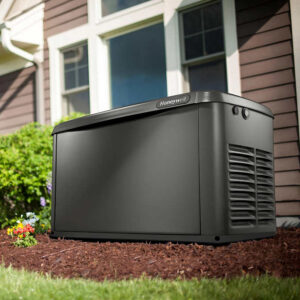
“Whole house” generators are permanently installed, typically on a slab of concrete, and wired to a transfer switch inside the house. I talked to many friends and neighbors who spent the money (typically $10,000 to $20,000) for a complete whole-home generator setup and none was happy with theirs. The best setups use an automatic transfer switch (see below) and power on once a month, yet they often failed to perform as expected in outages. I’m sure people will disagree in the comments (especially dealers of whole-home generators) but the reviews of these solutions are awful. A family member is on their third unit and recently found that it needs to be replaced again! On the plus side, whole-home generators can power the entire house and (in theory) can be activated in a few minutes in the event of an outage.
One common issue with generator-based solutions is fuel consumption. Although manufacturers no longer publish “idle” numbers, it is clear that they are most efficient under moderate to heavy load. Most will “drink” 25% or even 50% as much at light load as at full throttle. This might not be a problem (apart from cost and pollution) when connected to a natural gas pipe or large tank, but it’s a real concern for portable units with small tanks. Because it’s not a good idea to store gasoline for months or years, be prepared to run to the station to fill up when the power goes out! This is one reason to consider propane instead: It’s stable for years and a 20 lb tank runs as long as 5 gallons of gasoline.
Solar Panels
Solar panels are amazing, but they don’t solve the problem alone. One of the common misconceptions about solar panels is that they will power your home or business in the event of an outage. In fact, this is illegal in most locations and is simply not practical. Solar panels are an excellent power source, help reduce greenhouse and CO2 emissions, and cost less than you would think. But most installations are grid-connected and do not provide power in the event of an outage, even on a sunny day! This would require the addition of a battery and transfer switch, which is much more costly and complex, as we will discuss.
Solar panels have really improved over the last few decades, and today’s panels can provide an incredibly amount of electric power at very low cost. In fact, it is now cheaper to buy and install solar than to use conventional power for just a few years. But the power they provide varies dramatically moment-to-moment. A shadow on a panel can reduce or stop production, and they must be properly angled to maximize output. And of course they only produce electricity in direct sunlight. Therefore most modern solar deployments are connected to the electric grid, offsetting your demand or even powering the local grid when the sun is shining. Many also use “micro inverters” to output AC from each panel to reduce the impact of local shadows or under-performing panels on the rest of the system.
For the purposes of this article, I will lump solar panels together with the public grid as a power source but not as a solution to cover mid- to long-term power outages for the home or office. I strongly recommend investing in solar, however, since it brings many benefits and doesn’t cost as much as you think! Many in the DiY community are buying bulk or surplus panels for well under $1000 and connecting them to the expensive systems listed here.
Larger Battery Systems
I’ve mentioned batteries a few times so far, so it’s time to tackle the peculiarities of these. When considering battery-backed power, it’s important to consider the cost and benefits of the various options. There are small battery systems like the UPS mentioned earlier and larger solutions like the Tesla Power Wall and similar devices. Then we must consider chemistry, from lead-acid to lithium-ion, and the variations on each.
Since we covered consumer UPS devices above, let’s focus only on larger units capable of supplying 1 kWh or more. If you’re on a budget, there are a variety of less-expensive battery systems designed for computer and telecom racks. These typically cost $1000-$2000 for 5 kWh, which is remarkably affordable compared to name-brand packs. They can be paired with an inverter and solar panel management system for $1300 more, resulting in a functional system under $5000. There’s a whole world of DiY solar and battery hackers out there, and they’re doing amazing work building batteries out of surplus laptop cells, but this is certainly not for everyone. Still, there are some amazing resources out there like Will Prouse’s mobile-solarpower.com and diysolarforum.com.
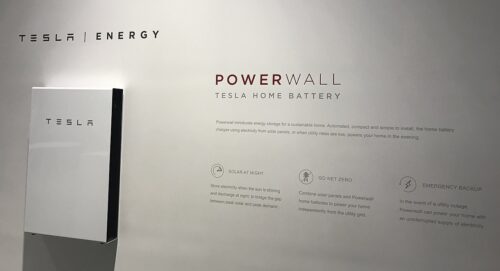
The Tesla Power Wall is a very nice integrated battery solution that works with or without solar panels. As of 2023 you can only buy a Tesla Power Wall with a complete solar solution, and the battery unit itself costs $12,850 for 13.5 kWh. Tesla uses lithium nickel manganese cobalt oxide (NMC) power cells in the Power Wall and carefully manages them (reducing usable capacity) to avoid damaging them. Tesla also sells solar roof tiles, but they are really not competitive: I priced out a Tesla solar and Power Wall solution for my home and it was over $100,000! Even a roof-mounted solar panel system with a power wall came out over $30k from a local provider.
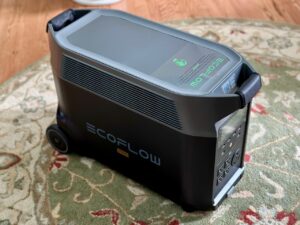
There is also an emerging class of so-called “solar generators” which combine solar and other DC inputs with an AC inverter and battery in a single unit. Some of these are compact and portable while others are larger and heavier or even fixed in place. Technically even the Tesla Power Wall is a solar generator! Perhaps the best of breed as of 2023 is the EcoFlow Delta Pro, one of the most successful kickstarter projects of all time. It uses an advanced LFP battery and provides 3.6 kWh of power as part of an ecosystem of products. Spoiler alert: I just bought two!
From Extension Cords to Transfer Switches
One of the biggest issues for battery backup solutions is cabling. How do you connect your existing equipment to the generator or battery and how do you switch over (and back) when the power goes out? Most cheaper “solutions” rely on a nest of extension cords from the generator to the devices themselves, rolled out and plugged in by hand when the power goes out. This is especially an issue for portable generators since they must be placed outside when running! The inside/outside issue is one reason most people lack any kind of power protection and many generators remain unused even when the power does go out.
The recommended solution for generators is to hard-wire a power circuit from the pad or patio to the breaker board. This can be terminated inside as one or more electrical outlets, but this still requires extension cords or manual re-wiring inside. A better solution is a transfer switch, which cuts the connection of a whole circuit from the grid to the backup generator or battery. A cheap manual transfer switch costs about $200 but requires manual activation when the power goes out. Automatic transfer switches exist too, but they’re much more expensive, starting at $1000. And any transfer switch requires extensive electrical installation work.
High-end transfer switches are able to switch between supplies (grid, solar, battery, or generator) nearly instantly, often using an app or schedule, and the best can prioritize various circuits based on demand and supply of power. For example, all circuits could be cut over to battery or generator power when the power goes out and lower-priority circuits could be cut as the power reserve is depleted. These can also dynamically allocate power, for example running on solar on sunny days and switching to the grid or battery at night. EcoFlow’s Smart Home Panel is an example of this smart home transfer switch.
What Solution is Right for You?
There are a lot of options, but it’s difficult to recommend any one solution. Solar panels are amazing, but an integrated solar setup can be costly and still won’t power your equipment through an outage without a battery backup system. Generators are cheap but most people are disappointed by the (lack of) usability in practice. It’s incredibly challenging to select and construct a system that is affordable and user friendly, leading many people to simply make do without power.
Expect to pair multiple devices to arrive at a complete solution. Even the fastest automatic transfer switch or generator inverter will have a gap, so a downstream UPS is required to keep computers up and running. And solar panels work best when paired with a battery and automatic transfer switch. You get the picture: You’re going to be buying and integrating a few different components.
Stephen’s Stance
I recently went through the process of evaluating and selecting an emergency power solution, and this article is the first in a series to lay out the various options. Although I’m something of a hacker, I decided to go with an integrated ecosystem rather than DiY, yet I couldn’t justify the expense of a Tesla solar roof and Power Wall setup. I ended up purchasing a pair of EcoFlow Delta Pro “solar generators” and their Smart Home Panel switch. I’ll go into more detail in later posts!
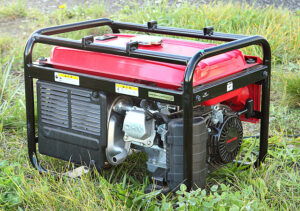
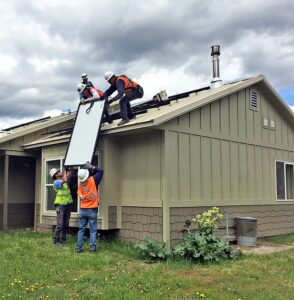
Leave a Reply